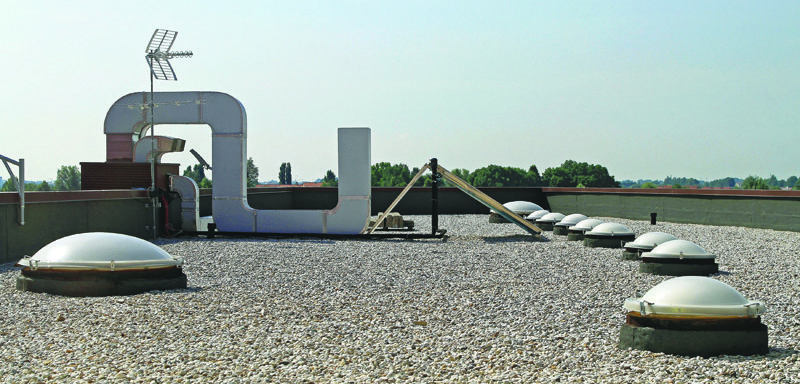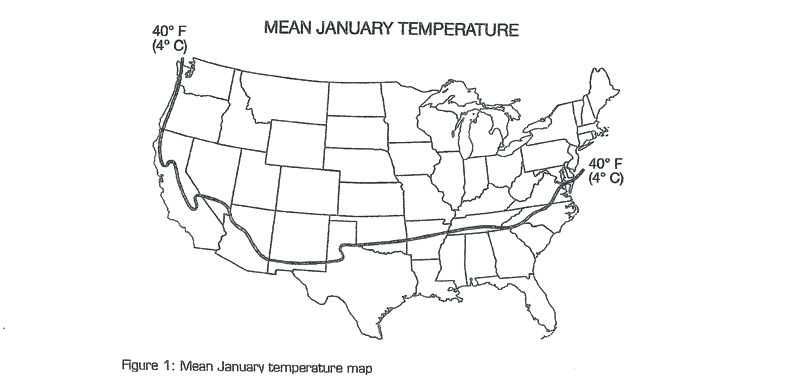
by Anthony Katona, CDT
Although many roof designers and construction professionals understand the basic meaning of the Dew point temperature, there remains a real need for greater awareness about how to accurately perform and demonstrate the necessary calculations. This author’s preferred method is to graphically illustrate the process. This allows one to accurately determine the value in relation to above-deck insulated, low-slope built-up roofing (BUR) assemblies.
Relied on by architects, engineers, HVAC designers, and roof consultants alike, the dew point is defined by the National Roofing Contractors Association (NRCA) as “the temperature at which air becomes saturated with water vapor; the temperature at which air has a relative humidity (RH) of 100 percent.” In other words, it is the point when water vapor condenses and changes from a vapor to a liquid.

Image courtesy Professional Roofing
According to NRCA, dew point calculations are necessary whenever the outside average January temperature is below 4 C (40 F), and when the expected interior winter RH is 45 percent or greater. Average exterior temperature can be determined from historical climatic data compiled by either the National Weather Service or local private weather services. When local climatic data is unavailable, the map in Figure 1 can be used to determine the general regions with outside January temperature below 4 C.
NRCA considers the roof system designer to be responsible for determining whether a vapor retarder is necessary. When dew point calculations have not been correctly performed before construction, this often results in a liability. Additionally, costs can be significant when the calculations must be conducted in the field after the fact. Therefore, understanding how to calculate dew point is critical.
For this article, the step-by-step procedures presented use hypothetical constant temperature values. However, actual dew point temperatures and related RH values constantly change in typical building environments. Therefore, this author recommends any findings be confirmed using methods advocated by NRCA. In the event a vapor barrier is required, further support can be obtained from the U.S. Army Corps of Engineers’ (USACE’s) Cold Regions Research and Engineering Laboratory (CRREL) and the American Society of Heating, Refrigerating, and Air-conditioning Engineers (ASHRAE). (Vapor barriers and vapor retarders are not synonymous. The former is a layer of material[s] used to prevent the transfer of moisture, primarily in the form of vapor, from permeating into adjacent materials within a building environment. A vapor retarder is a layer of material[s] used to prevent the transfer of water vapor, primarily in the form of liquid, from permeating into adjacent materials or anywhere within a building structure.)





Why is there a vapor retarder placed on top of the metal deck?
Metal is vapor tight (μ-value = infinite), which makes is a perfect vapor barrier. Seams in the metal deck can be taped, but so do the seams in the vapor retarder.